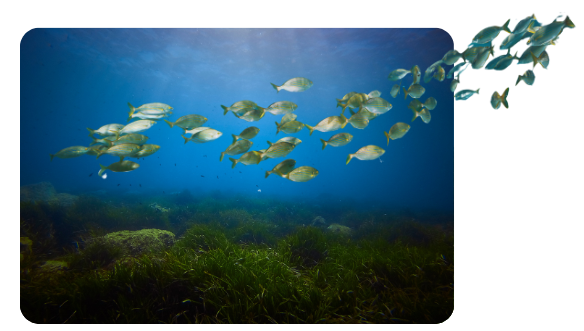Story
Discover our new project investigating the production of climate-cooling gas DMS in agriculture
15 June 2023
Scientists have installed autonomous sensors into fields of key crops to gain a better understanding of how agricultural land may act as a source of dimethylsulfide (DMS).

Photo credit: Jani Pewter – Plymouth Marine Laboratory
In an exciting new project, scientists from Plymouth Marine Laboratory, Cranfield University and the University of East Anglia (UEA) are investigating the importance of the sulfurous osmolyte dimethylsulfoniopropionate (DMSP) in agricultural landscapes and its role in crop stress tolerance and yield, and how much climate-cooling DMS is produced as a result through these kinds of environments.
The scientists have installed autonomous sensors in fields of key crops to automatically measure the levels of this important gas in-situ. The innovative low-power sensors, developed by Dr Valerio Ferracci at Cranfield University, are operating off-grid at Easton College in Norfolk using solar panels, marking some of the latest efforts towards Net Zero scientific experiments.
 Photo credit: Jani Pewter – Plymouth Marine Laboratory
Photo credit: Jani Pewter – Plymouth Marine Laboratory
Plymouth Marine Laboratory’s Dr Frances Hopkins, working alongside the UEA partners Dr Ben Miller, Prof Jon Todd, Dr Rocky Payet and Prof Parvadha Suntharalingam, said:
“DMSP plays important roles in stress protection and in global carbon and sulfur cycling. It is the main precursor of the climate-cooling gas dimethylsulfide (DMS), which is produced when DMSP is degraded by microbes.”
“Once released into the atmosphere, DMS is oxidised and cools our planet through the production of clouds, which act as a barrier and block sunlight from reaching the Earth’s surface, reflecting it back into space.”

Photo credit: Jani Pewter – Plymouth Marine Laboratory
Prof Jon Todd from UEA said: “Marine algae, corals and bacteria are already well-known DMSP producers, but many plants on land also create this molecule, including some at very high levels, like Spartina – a type of saltmarsh grass found in coastal areas. However, few agricultural species have been tested for the ability to produce DMSP. Data shows that DMSP is present in the soil around crop roots, and microbial DMS production is similar to levels of those in seawater.”
Dr Rocky Payet added: “As a result, the global production of DMSP and DMS from agriculture is likely underestimated, and our new study aims to quantify just how much it could be.”
Dr Ben Miller said: “Working out exactly where and how much DMSP and DMS is produced in agriculture is key to understand the significance of these processes, how agricultural practices influence them and implications for our climate. Our plan is to develop tools to improve crop productivity, food security and provide greener agricultural systems.”

Photo credit: Jani Pewter – Plymouth Marine Laboratory
